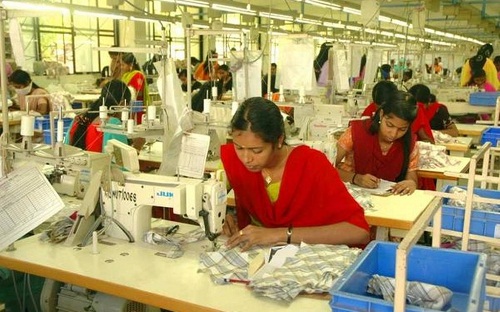As migrant workers return to work, Tiruppur units buzz with industrial activity

Worth over $2.4 trillion global apparel industry, in India the industry employs millions of workers. However, the industry is plagued by various labor rights issues further exacerbated by the pandemic. COVID-19 has impacted India’s garment exports leading to order cancellations, inventory buildups and slower realization of export receivables. It has also affected domestic consumption as new store openings have stopped while existing ones are facing an inventory build-up.
Apparel prices in the domestic market are being impacted as exporters continue to dump their inventory in the domestic market. This is also leading to reduced engagement of casual labor, factory closures and subsequent return of workers to their native places.
Factory closures lead to rising unemployment
Several workplaces across the country are closing down owing to public health concerns and social distancing measures. This has left millions of garment workers jobless. Garment factories in Tiruppur had shut down even before the lockdown as orders from western countries were being cancelled. Two nearby villages – Allapuram and Mannapalayam – suffered the most as all employment in both villages ceased completely.
Garment factories in Bengaluru, Karnataka are suffering due to rising labor protests. In the first week of September, workers employed Shahi Exports’ Unit 8 in Bengaluru refused to enter factory premises as the management had refused to provide transportation services. Most workers employed in the factory cannot afford travelling expenses. Factory management decided to discuss matters with union representatives of Karnataka Garment Workers Union (KGWU) and find an amicable solution.
Promote labor rights
Indeed, it is high time the industry helps garment producers organize themselves within cooperatives. This would enable them to not only access finance and technologies but also facilitates sharing of best practices, boosts productivity and profits, and reduces poverty.
The industry needs to make more efforts towards promoting labor rights and social security, improving health and sanitation, and promoting adequate standards of living. Government intervention in the form of financial assistance, and developmental and welfare schemes can also boost the sector’s growth.
The prevailing crisis has amply manifested the plight of garment workers. In such a situation, the government needs to initiate measures to protect their livelihoods by making various supportive arrangements. The government should ensure maintenance of minimum labor standards in factories. It should trace supply chains in detail and initiate measures to mitigate the exploitation of garment laborers.
























